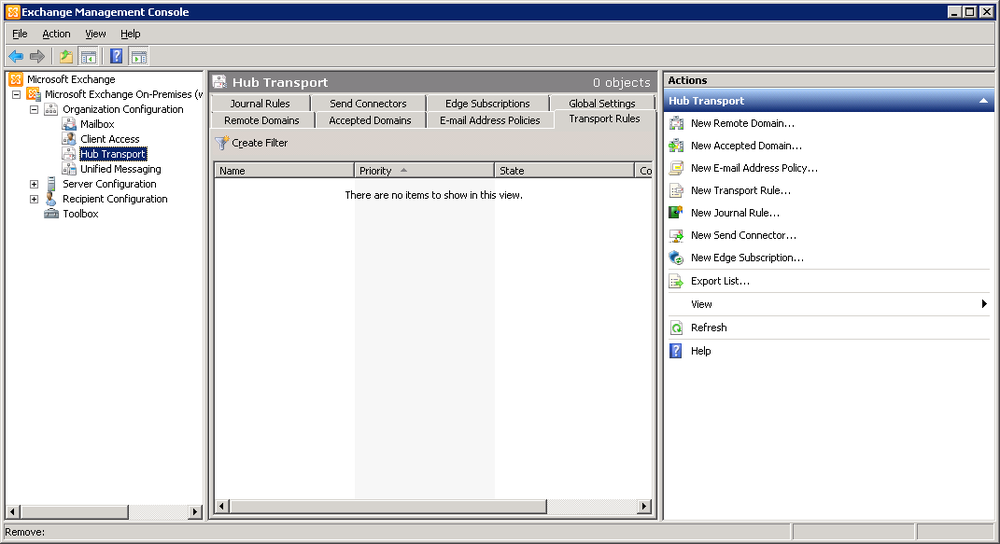

Get-Mailbox myaliasname | Get-MailboxStatistics | Sort totalitemsize -desc | ft displayname, totalitemsize, itemcount | Export-CSV C:\mailboxessize.csv Get-Mailbox myaliasname | Get-MailboxStatistics | Sort totalitemsize -desc | ft displayname, totalitemsize, itemcount Note: You can obtain the database name by using the command: Get-MailboxDatabase Get-Mailbox -server -database “Mailbox Database 0154525136” | Get-MailboxStatistics | Sort totalitemsize -desc | ft displayname, totalitemsize, itemcount | Export-CSV C:\mailboxessize.csv Get-Mailbox -server -database “Mailbox Database 0154525136” | Get-MailboxStatistics | Sort totalitemsize -desc | ft displayname, totalitemsize, itemcount Report mailboxes size in a specific Exchange server database: Get-Mailbox -server servername | Get-MailboxStatistics | Sort totalitemsize -desc | ft displayname, totalitemsize, itemcount | Export-CSV C:\mailboxessize.csv Get-Mailbox -server servername | Get-MailboxStatistics | Sort totalitemsize -desc | ft displayname, totalitemsize, itemcount Report mailboxes size in a specific Exchange server: Get-Mailbox | Get-MailboxStatistics | Sort totalitemsize -desc | ft displayname, totalitemsize, itemcount | Export-CSV C:\mailboxessize.csv Get-Mailbox | Get-MailboxStatistics | Sort totalitemsize -desc | ft displayname, totalitemsize, itemcount Report mailboxes size in the entire Exchange organization:
MAILBOX SIZE EXCHANGE 2010 HOW TO
The following article describe how to create Mailboxes size report/s in Exchange 2010. The Article below is from the following website : If you want to know the individual size or everyone’s mailbox size then the following commands will be able to show you the mailbox size and export the data using. $Mailboxes | Sort-Object MailboxSizeMB -Desc | Select PrimarySMTPAddress, MailboxSizeMB | Export-Csv -NoType “C:\temp\Mailboxessize.Exchange 2010 Mailboxes Size Report – Powershell #REM – to export this out - do the following 😉 enjoy (see the part where it says “Select” you can add additional fields like ALIAS etc to this) $Mailboxes | Sort-Object MailboxSizeMB -Desc | Select PrimarySMTPAddress, MailboxSizeMB $Mailbox | Add-Member -MemberType “NoteProperty” -Name “MailboxSizeMB” -Value ((Get-MailboxStatistics $Mailbox).()) $Mailboxes = Get-Mailbox -ResultSize Unlimited i didnt come up with this, i just found it ***if this is what you were looking for, please click this link and give the guy some credit. once you have the data on all your mailboxes, and the output can be IMPORTED into excel you can do all your sorting etc and delete whatever you dont want The other half of the information you need is in Get-Mailbox :- found answer in following link. Problem is, Get-MailboxStatistics output just a display name – not unique and cant really be used as such. There’s also a handy guide on this at Petri as well. You can find a good description of the get-mailboxstatistics cmdlet over at this TechNet page.

Likewise, if you just want to create a new file each time (no append) then you would want to use ‘>’ instead.
MAILBOX SIZE EXCHANGE 2010 FREE
LUN size takes into account to leave about 20 of free space to avoid monitoring. (Observe that this is a resource intensive cmdlet if you have a lot of Mailboxes on the. Each database will be divided into 2 LUNS, data and transaction logs. Largest Mailbox Folders in Size Show top ten largest Mailbox folders on the Mailbox Server sorted by size. If it does exist, it will append the new output to the end of the current file. I am going to start a migration from and Exchange 2003 cluster to a new Exchange 2010 SP2 with 14 mailbox databases of a supposed maximum size of about 400 GB each. The ‘>’ creates a new text file if one didn’t already exist. Try running the script without it, you’ll see what I mean.Īnd lastly, we throw the output into a text file. We also add some handy labels to the top of the display so we know what it is exactly we are looking at when we happen to stumble upon this file a year down the road or have to send it of to someone else to decipher.

You may notice this bit of code: $_.() That is converting the mailbox size (which is stored as bytes) to MB. Specifically we want to sort in a descending order by mailbox size then name. Basically we are then piping the mailbox data to get sorted. Get-MailboxStatistics -database ‘Exchange Mailbox Database’ | where For my purposes, this was all that was needed. Granted, this could be larger and uglier depending upon how many mailbox statistics fields you required. Here’s a script I put together for Exchange 2010 to grab the mailbox size for all the users in my Exchange mailbox database, formatted, and saved to a text file.


 0 kommentar(er)
0 kommentar(er)
